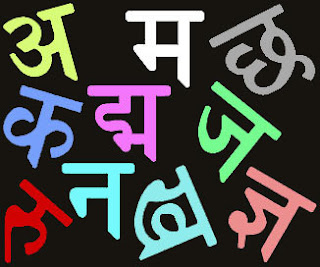Some examples for Nepali unicode converter typing.
namaskar = नमस्कार
dhanyawaad = धन्यवाद
sagarmatha = सगरमाथा
sambidhan = संविधान
sa\watantrataa = स्वतन्त्रता
Kathmandu = काठमाडौं
sa*bidhan = संबिधान (* = अनुस्वर)
nepali unicode = नेपाली युनिकोड
Mero desh Nepal ho = मेरो देश नेपाल हो।
pratishat/ko = प्रतिशतको (pratishatko = प्रतिशत्को)
nepali unicode = नेपाली युनिकोड
What is Unicode?
Unicode is a uniform encoding for the different type of font all over the world. The word "Unicode" is a unique, unified, universal encoding. It is a set of unique code to represent the visual art, here the unicode visual art represent the text character set. Unicode has fixed set of code chart for all the character. Example to represent unicode, here to dispaly character "a" there is unique set of code, which is called unicode.
What is Nepali unicode?
Nepali Unicode is an international encoding standard for use with Nepali language and script, by which each letter, digit, or symbol is assigned a unique numeric value that applies across different platforms and programs. Saral Nepali Unicode is very easy, accurate and user-friendly Nepali Typing online software. The features includes easy Nepali Typing, Keyboard facility that it provides for all letters and numbers, Spacious for typing large number of Nepali Unicode . In addition to these features of Nepali Unicode it also provides Preeti to Unicode Converter. Preeti to Unicode Converter converts from Preeti font to Nepali Unicode or Kantipur font to Nepali Unicode with accuracy. It also includes Nepali Unicode to Preeti Converter in the website. Nepali Unicode to Preeti Converter converts from Nepali Unicode to Preeti font or Nepali Unicode to Kantipur font.

History of the Nepali language
Around 500 years ago, Khas from the Karnali-Bheri-Seti basin migrated eastward, bypassing inhospitable Kham highlands to settle in lower valleys of the Gandaki basin that were well suited to rice cultivation. One notable extended family settled in Gorkha, a small principality about halfway between Pokhara and Kathmandu. In 1559 AD a Lamjunge prince Dravya Shah established him in the throne of Gorkha with the help of local Khas and Magars. He raised an army of khas with the commandership of Bhagirath Panta. Later, in the late 18th century his heir Prithvi Narayan Shah raised and improvised an army of Khasa (Chhetri), Thakuri, Gurungs, and Magars and possibly other hill tribesmen and set out to conquer and consolidate dozens of small principalities in the Himalayan foothills. Since Gorkha had replaced the original Khas homeland as thary initiative, Khaskura was redubbed Gorkhali, i.e. language of the Gorkhas.[citation needed] The most notable military achievement of Prithvi Narayan was conquest of the urbanized Kathmandu Valley, on the eastern rim of the Gandaki basin. This region was also called Nepal at the time. Kathmandu became Prithvi Narayan's new capital, from which he and his heirs extended their domain east across the Koshi basin, north to the Tibetan Plateau, south into the plains of northern India, and west across the Karnali/Bheri basin and beyond.[citation needed] Expansion, particularly to the north, west, and south brought the growing state into conflict with the British and Chinese. This led to wars that trimmed back the territory to an area roughly corresponding to Nepal's present borders. Both China and Britain understood the value of a buffer state and did not attempt to reduce the territory of the new country further. Since the Kathmandu Valley or Nepal had become the new center of political initiative, this word gradually came to refer to the entire realm and not just the Kathmandu Valley. And so Gorkhali, language of Gorkha, again came to be known as Nepali.[citation needed] Khaskura/Gorkhali/Nepali is spoken indigenously over most of Nepal west of the Kaligandaki River, then progressively less further to the east. This is shown graphically in detailed language maps of western [1] and eastern [2] Nepal as language number 73. See also: Lhotshampa as Nepali is called in Bhutan. -Reference: Wikipedia.org




